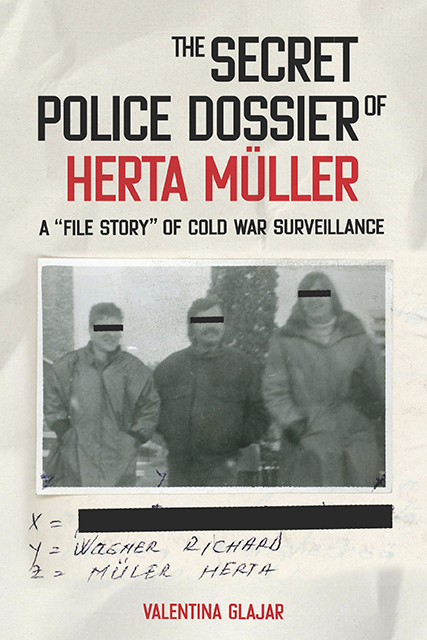Book contents
- Frontmatter
- Dedication
- Contents
- Preface
- Terms and Abbreviations
- Introduction
- 1 The Filed Story of Niederungen
- 2 Contact Stories: The Author and the Officer
- 3 Conspiratorial Stories: The Securitate Sources MAYER, SORIN, and EVA
- 4 Captured Stories: Remote Audio Surveillance
- 5 Migrating Stories
- Epilogue
- Bibliography
- Appendix I Müller’s Surveillance Timeline (1974–93)
- Appendix II Author’s Accreditation by CNSAS
- Index
3 - Conspiratorial Stories: The Securitate Sources MAYER, SORIN, and EVA
Published online by Cambridge University Press: 10 June 2023
- Frontmatter
- Dedication
- Contents
- Preface
- Terms and Abbreviations
- Introduction
- 1 The Filed Story of Niederungen
- 2 Contact Stories: The Author and the Officer
- 3 Conspiratorial Stories: The Securitate Sources MAYER, SORIN, and EVA
- 4 Captured Stories: Remote Audio Surveillance
- 5 Migrating Stories
- Epilogue
- Bibliography
- Appendix I Müller’s Surveillance Timeline (1974–93)
- Appendix II Author’s Accreditation by CNSAS
- Index
Summary
A Securitate recruitment manual published in 1976 singles out the “informative network” as the principal most important means of achieving the intelligence officers’ goals in their line of work. Müller's informers were no exception. As chapter 1 shows, the Securitate opened Müller's surveillance file on the basis of informer reports. Her short stories “enjoyed” the literary expertise of BARBU, VOICU, MAYER, and later EVA. MAYER was entrusted with closely monitoring her activity at the AMG. WAGNER and ANDREEA reported on her teaching activity. EVA and PETRA translated and interpreted her writings and various reviews in West German or local publications. CIOBANU was the neighbor assigned to spy on any visitors at Müller and Wagner's apartment, and specifically on foreign citizens or diplomats. Others provided just the occasional odd report, like VALI from Sibiu or TAMARA from Bucharest.
The intelligence Pădurariu and his fellow Securitate officers received from this network of informers allowed them to learn about what they perceived as potential hostile activities, and to work toward their prevention, uncovering, and, ultimately, liquidation. While the source network comprised three categories— informers, collaborators, and hosts of safe houses or meeting places—the informers were the bedrock of the network, as they proved to, or were supposed to, possess aptitudes commensurate with the tasks of the officers; equally important, it was possible for them to infiltrate certain hostile groups and get close to the surveilled elements in their midst. Working in tandem with their case officers, informers were expected to provide the desired intelligence but also to recognize and analyze potentially useful information. They were, after all, as the recruitment manual explains, maneuverable and educable (19).
Informers worked with their handlers in a “secretive and organized” way. In fact, their files were kept safe in locked metal file cabinets housed in the office of the head of the Securitate. Informers met their handlers on a regular basis, were assigned tasks and missions, and then reported back with the intel obtained. These reports could be in written form, as informative notes composed by the informers and always signed with their assigned or chosen code names. For various reasons, as in MAYER's case, the meetings were either recorded or memorized by the officers who then penned the informer reports. The importance of these informers cannot be overstated in the surveillance system of the Securitate, and thus the recruitment process and its several prescribed steps naturally gained significant attention.
- Type
- Chapter
- Information
- The Secret Police Dossier of Herta MüllerA 'File Story' of Cold War Surveillance, pp. 129 - 189Publisher: Boydell & BrewerPrint publication year: 2023

